South African Food Dishes: Basic Overview
Common Ingredients
Common Cooking Methods
Courses
Meals
Key Taste
Eating Etiquette
Meal Presentation
Culinary Festivals
Influence and Fusion
South African Food Dishes: Origin and Region
Cuisine
Cuisine’s Geographical Territory
Popular Types of South African Dishes
-
Cakes and Pastries
These range from creamy fillings to crispy crusts.
They are often served as desserts, they pair perfectly with warm beverages.
-
Grilled and Barbecued Dishes
Grilled and barbecued dishes are essential in social gatherings.
Meats and vegetables are key components, which are grilled over open flames.
The art of marinating is also important. It’s a blend of spices and herbs.
-
Bread and Doughs
There are various styles of baked goods, from fluffy, leavened breads to crisp, fried recipes.
They can come with sweet and savory toppings or fillings.
South African dishes showcase a rich tapestry of culinary traditions from the country’s diverse communities. The cuisine is also a rich blend of indigenous and international influences.
The San peoples of South Africa were originally hunter-gatherers, relying on wild foods like tortoises and crayfish. Agriculture was introduced by the Bantu peoples, bringing crops such as maize and sweet potatoes to the region.
Over centuries, European settlers, Cape Malay communities, and French Huguenots have contributed to South Africa’s diverse cuisine.
Delicious food offerings from the Netherlands and British culinary gems have a special place in the history of South African food. Plus, Indian immigrants further diversified local cuisine with their spices and dishes.
Today, let me introduce you to 22 popular yet delicious dishes from the cuisine of South Africa. But first, I’ll briefly explain about the country’s traditional foods, their popularity in the world, and how healthy they are.
Then, you will learn the differences in culinary practices in different regions of the country. Lastly, there are some suggestions to pair beverages with dishes to fully enjoy South African delicacies. Check them out now!
22 Popular South African Dishes with Filters
Get ready to explore a handpicked list of the top 22 dishes from South Africa, famed for their culinary excellence. You can use the filters to browse through dishes based on taste profiles, ingredients, types of dishes, cooking techniques, etc.
Furthermore, let’s see some key features of South African culinary delights, including the most popular, traditional, national, beloved street food, and fusion options.
Biltong
- Traditional
Biltong is a sophisticatedly prepared snack from South Africa made primarily from red meats like beef, lamb, or goat. It offers a unique taste blend of sweet, smoky, aromatic, and salty flavors.
Originating 400 years ago as a preservation method for long journeys, biltong’s preparation involves curing, air-drying, and marinating in a mix including vinegar, sugar, and spices.
While fresh biltong is best consumed within 4 days, proper storage can extend its shelf life to months. You can enjoy this snack with pickles and bread, or add it in soups and stews.
Bobotie
- National
- Traditional
Bobotie is a South African dish with a distinctive bright yellow custard topping. It consists of minced meat mixed with onions, garlic, and bell pepper.
Accompanied traditionally by sambal and long-grain rice (cooked with turmeric and raisins), bobotie presents an attractive meal.
Originating from a 1609 Dutch cookbook, bobotie gained widespread recognition in the Cape of Good Hope in the 17th century after the Cape Malay community introduced pork and mutton variations.
Boerewors
- Traditional
Boerewors, translating to “farmer’s sausage” in English, is a famous fresh sausage in South Africa. The inspiration for this special sausage is the “verse worst”, an old Dutch link.
This South African sausage is made from lean meat (primarily beef) and lard (following a strict ratio) with spices. This special boerewors sausage is different from others thanks to the meticulous meat selection and grounding method.
Overall, boerewors has a unique taste with a lightly firm exterior and a rich, fatty interior. If you want to try the authentic way to enjoy the sausage, try combining braaied (barbecued) boerewors with pap, a traditional maize porridge in Africa.
Koeksister
- Street Food
- Traditional
Koeksister is a traditional South African dessert known for its sweet, syrupy taste and distinctive braided appearance.
They are made by deep-frying plaited dough until golden brown and then immediately soaking them in a cold, sweet syrup, resulting in a moist, sticky texture and an intensely sweet flavor.
This treat offers a delightful contrast of textures, with a crispy exterior and a soft, syrup-infused interior.
If you go to the town of Orania, you will find a statue of koeksisters. They built that statue to celebrate the women who sell things and donate money to local public facilities like schools and churches.
Vetkoek
- Street Food
- Traditional
Vetkoek is a popular South African comfort food, consisting of deep-fried bread that are crispy on the outside and soft and airy on the inside.
It can be considered a dessert or a quick South African breakfast. They can be filled with a variety of savory fillings, such as minced meat, or served with sweet toppings like honey or jam.
Given how delicious vetkoek is, it’s no surprise that the dish has crossed South Africa’s border to become one of the most popular treats in Botswana and Namibia.
Bunny Chow
- Fusion
- Street Food
- Traditional
Originating from Durban, South Africa, Bunny chow is a beloved dish crafted by the local Indian community. It consists of a hollowed-out loaf of bread filled with savory curries, such as mutton, lamb, or beans.
To order Bunny chow, specify the size (quarter, half, or whole loaf) and the type of curry filling. For instance, requesting “half mutton bunny” will clearly convey your preference for a half loaf filled with mutton curry.
Chakalaka
- Traditional
Chakalaka is a spicy vegetable relish that hails from South Africa. It combines onions, tomatoes, peppers, carrots, beans, and a variety of spices.
Traditionally served with braaied (barbecued) meats, pap (maize porridge), or bread, Chakalaka is a versatile vegetarian side dish that adds a burst of color and flavor to any meal.
Every household in South Africa has its own recipes to create a pot of chakalaka, yet, generally, this dish highlights the spicy and slightly sweet taste.
Pap
- Traditional
Pap has become a fundamental part of daily meals, especially in South Africa. Mielie meal, a fine, white flour made from maize, is the primary ingredient.
Originating with the introduction of maize to Sub-Saharan Africa in the late 16th century, each African country has its unique take on this versatile dish. You might find it under various other names such as ugali, sima, fufu, kimnyet, kuon, etc.
People usually eat the treat for breakfast, yet it also depends on the region. They serve it with meat and milk in some areas, while others do it with sugar and butter.
Sosaties
- Traditional
Sosaties top the list of must-try South African braai (barbecue) foods, serving as an unofficial national dish that you can find in family restaurants to coffee shops across the country.
These skewered and grilled meat delicacies, typically made with lamb or mutton cubes, are marinated in a flavorful Cape Malay sauce. Occasionally, vegetables are added to the skewers to enhance the dish’s nutritional value.
The name “sosaties” itself derives from a Malay word for “spicy sauce,” highlighting the cultural fusion that characterizes this beloved South African barbecue favorite.
Samp and Beans
- Traditional
Samp and beans, known as “umngqusho” in some South African cultures, is a hearty and nutritious dish. It combines samp (crushed dried maize) and beans, which are typically slow-cooked.
This traditional meal is flavored with a variety of spices, onions, and sometimes meat, creating a rich and comforting dish. Samp and beans are loved for their simplicity, affordability, and the way they satisfyingly blend textures and flavors.
Potjiekos
- Traditional
Potjiekos is a well-known South African one-pot dish. Unlike typical stews, potjiekos contains minimal liquid, focusing on meat, vegetables, and sometimes potatoes, slow-cooked to create deep, concentrated flavors.
It is named after the cast iron pot it’s cooked in, often a three-legged potjie, reminiscent of a Dutch oven brought to South Africa by Dutch settlers in the 17th century.
This dish, originating from the pioneering Dutch voortrekkers, is distinguished by its unique cooking method and the addition of a special Dutch-Malay sauce, which imbues the dish with its signature taste.
Bokkoms
- Traditional
Bokkoms is a special South African delicacy, originating from the Western Cape region, specifically the fishing communities along the West Coast. It consists of whole, salted, and dried mullet fish, known locally as “harders,” which are hung up to dry in the open air.
This preservation method, similar to making biltong but with fish, results in a savory, intensely flavored snack. Bokkoms can be eaten as is, after being rehydrated, or used to add a rich, salty fish flavor to pasta dishes and stews.
With its name “bokkoms” originating from the Middle Dutch word “bok” (which means goat), this dried fish was first produced in the Cape of Good Hope in 1658.
The “bok” word was used mainly because of the goat horn-like appearance of these fish. Since these fish are also dried, some people call them “biltong fish”.
Samoosa
- Street Food
- Traditional
Samoosa is a popular snack in South Africa. They are deep-fried triangular pastries filled with a variety of spiced fillings, including minced meat, chicken, vegetables, or lentils.
This appetizing treat, influenced by South Africa’s Indian community, features a crispy outer layer enveloping a savory, aromatic interior. Samoosas are commonly enjoyed at gatherings, as a street food snack, or as part of a meal.
This treat came to Africa between the mid-19th and early 20th centuries.
Bredie
- Traditional
Bredie is a common South African stew typically made with slow-cooked meat, often lamb or mutton, and various kinds of vegetables. The most famous version is the tomato bredie, which features a tomato-heavy sauce.
The stew is simmered for an extended period, allowing the flavors of the meat, spices, and vegetables to meld together. Bredie embodies the culinary tradition of the Cape Malay community. This dish is a staple in South African homes, especially during the colder months.
Waterblommetjie
- Traditional
Waterblommetjie is an indigenous staple to South Africa, first created by the Native Africans, the Khoikhoi people. The waterblommetjie or Aponogeton distachyos flowers are a common plant easily found in the marshes/dams of the Western Cape.
This specific plant has various health benefits, so it has existed in the Native Africans’ diet for a long time. Locals normally harvest the plant buds in the southern midwinter months (July or August) and cook them for meals in winter.
They use waterblommetjie and lamb (as the primary protein) to make this stew. The food will be cooked for hours before being able to be served.
Cape Malay Curry
- Fusion
- Traditional
Cape Malay curry is a flavorful curry that highlights the rich culinary heritage of South Africa’s Cape Malay community. Characterized by its aromatic blend of spices, including turmeric, cumin, coriander, and cinnamon, this curry offers a perfect balance of sweet and savory notes.
Typical meat for Cape Malay curry is chicken, lamb, or beef, and it often incorporates dried fruits like apricots or raisins.
It’s usually served with rice, rotis, or traditional sides like sambals, showcasing the unique fusion of Indonesian, Dutch, and South African flavors.
Melktert
- Traditional
Melktert, which translates to “milk tart” in English, is a classic South African dessert famous for its smooth, creamy filling and delicate pastry crust.
The filling, made from milk, eggs, sugar, and flour, is cooked until thickened and then poured into a baked pastry shell. Melktert is gently spiced with cinnamon and often sprinkled with a dusting of cinnamon powder on top.
This melktert was created when the Dutch settlers came to the Cape Colony in the 17th century.
Malva Pudding
- Traditional
Malva pudding is a beloved South African dessert made with apricot jam and a generous amount of butter.
The pudding has a sweet flavor and spongy texture with its rich, caramelized exterior. It also achieves a moist consistency that’s further enhanced by a decadent sauce poured over it after baking.
This sauce, typically a mix of cream, butter, sugar, and sometimes brandy or another liqueur, seeps into the warm cake.
In Afrikaans, the word “Malva” stands for a plant with rose-scent or fragrant lemon geranium. It also leads to a theory about the name of this simple sponge cake as its batter was flavored by the leaves initially.
Hertzoggie
- Traditional
Cookies are a favorite South African dessert, and hertzoggie (or hertzogkoekie) is one of them. Hertzoggie consists of a pastry base with apricot jam and is topped with toasted coconut meringue.
The cookie is named after a 20th-century South African politician, J. B. M. Hertzog, because it was his favorite, and his supporters wanted to call it that way.
To enjoy it, pair the cookies with tea. Light bitterness from tea and sweetness from the cookies blended with the other ingredients to create a phenomenal taste.
Braaibroodjie
- Street Food
- Traditional
Braaibroodjie is a South African grilled cheese sandwich. It’s a versatile treat enjoyed at any time of the day, from lunches to dinners.
In South Africa, their braaibroodjie will be cooked on a charcoal stove. Grilling foods on the charcoal fire will not only offer a crispy exterior as you usually expect from a sandwich, but it will also enhance the taste of the sandwich with the lovely smokey scent.
Roosterbrood
- Traditional
Roosterbrood is a traditional South African bread, typically baked over an open flame or on a grill. Unlike the previous braaibroodjie, this roosterbrood requires no fillings. It’s a type of bread made of simple ingredients (water, sugar, yeast, flour, and so on).
This grid bread is an authentic South African treat as the indigenous Khoe people from the Cape region are the first ones to make this bread.
Roosterbrood is often served hot, slathered with butter, jam, or used as a side for dipping in stews and braai meats. It’s a beloved part of South African outdoor cooking.
Potbrood
- Traditional
Potbrood is a South African bread that is baked in a heavy, cast-iron pot known as a “potjie,” directly over coals or in a fire. The dough for Potbrood can be plain or flavored with ingredients such as cheese, garlic, herbs, or sun-dried tomatoes.
It was inspired by the Dutch’s cooking method. The Boer settlers were the first to create this bread in a Dutch oven underground.
To enjoy these potbroods the right way, you should experience it with braaied dishes or potjiekos (stews).
What Are The Differences in Dishes and Ingredients by Region in South Africa?
The diverse geography of South Africa influences regional culinary practices, with coastal and inland regions, each having distinct dishes and ingredients. Here’s a comparative analysis.
Coastal Regions
Inland Areas
In the next, you’ll learn about the fine art of combining dishes with suitable drinks in the native culinary traditions of South Africa.
What Beverages Should Be Paired with Dishes in South Africa?
Let’s explore the five types of beverages in South Africa that serve as perfect complements to dishes, along with their common dish accompaniments.
Finally, food in South Africa always surprises people. I hope my suggestions today will help you a lot in your future trip to South Africa.
If you have any questions or other fascinating suggestions, feel free to leave a comment below, and I will reply as soon as possible. Thank you!


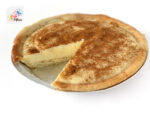

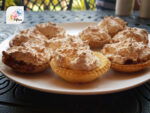
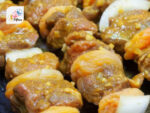
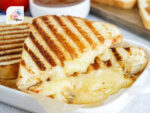


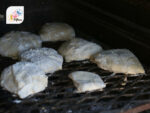

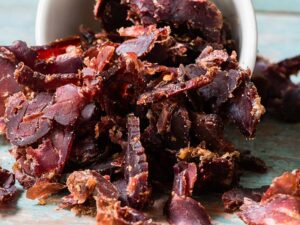
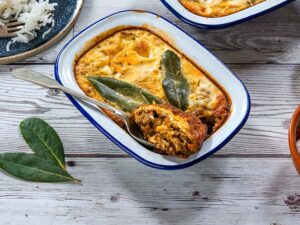
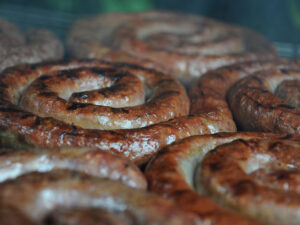

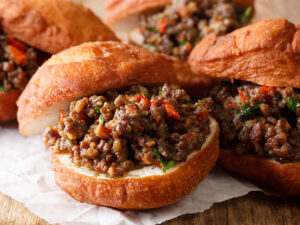
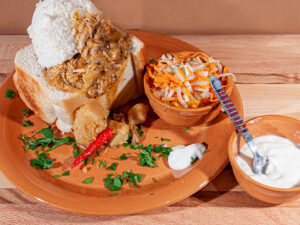
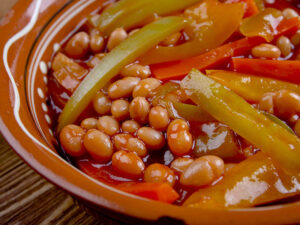
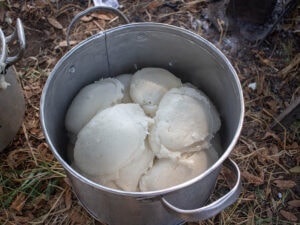
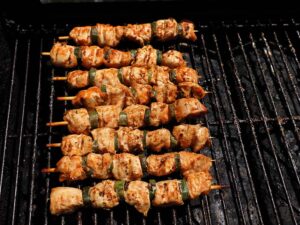
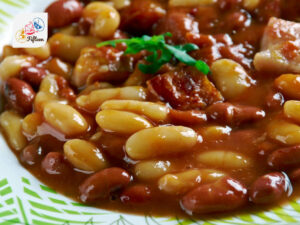
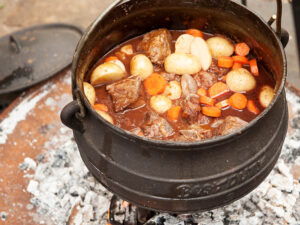
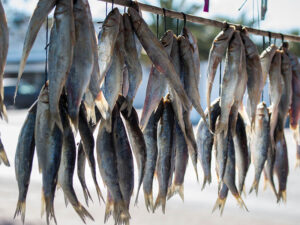
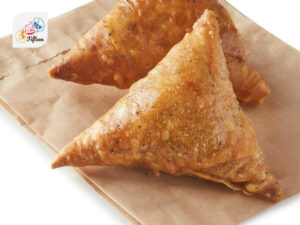
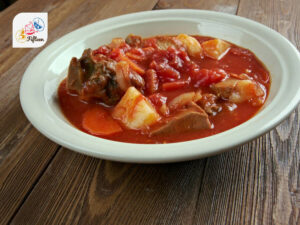
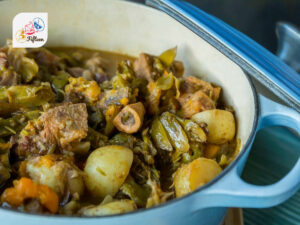
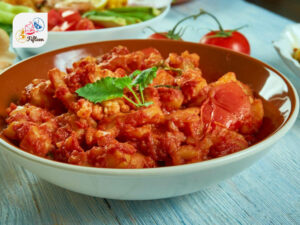
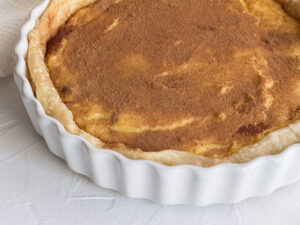
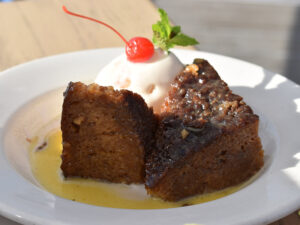

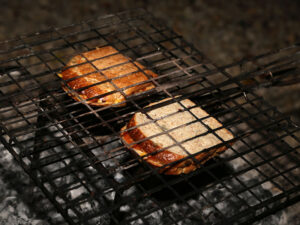
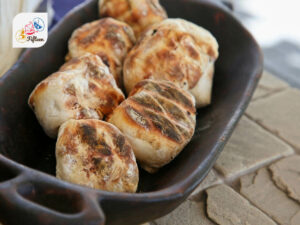
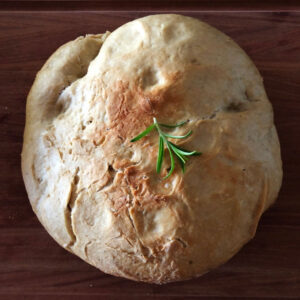
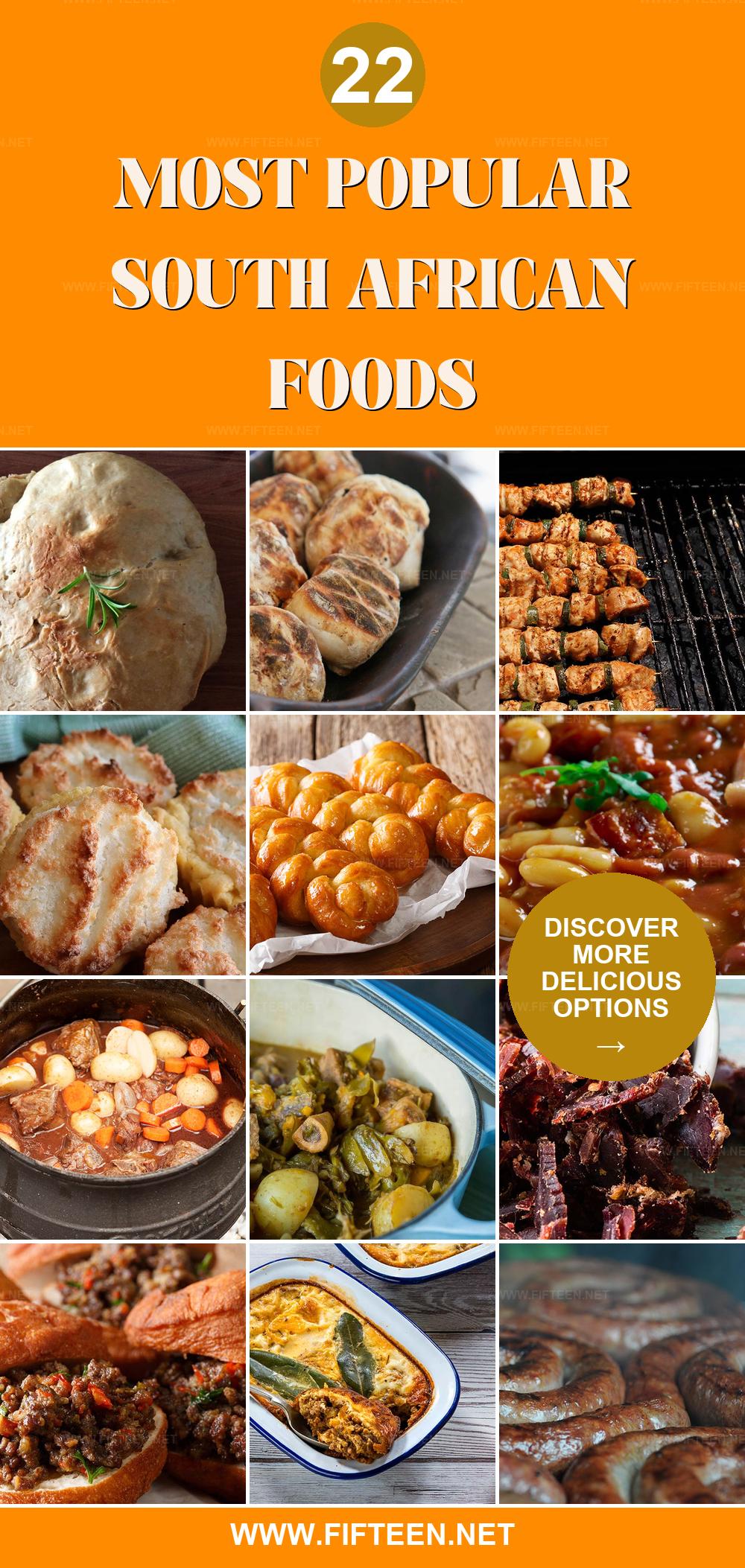
Jamie Scott
Editor in Chief, Senior Content Writer
Expertise
Home Cooking, Meal Planning, Recipe Development, Baking and Pastry, Food Editor, Cooking-video Maker, Western Food Evaluation Expert
Education
Le Cordon Bleu College of Culinary Arts
Local Community College, New York, NY
Jamie Scott is a skilled culinary expert and content creator specializing in Western cuisine. With over 15 years in the culinary field and formal training from Le Cordon Bleu, Paris, Jamie deeply understands how to blend nutrition with delicious flavors. His passion for cooking matches his commitment to making healthy eating accessible and enjoyable.
On Fifteen.net, Jamie brings a fresh perspective to classic dishes and beverages, offering readers insightful recipes, cooking tips, and a fresh view on meal planning that emphasizes taste, health, and simplicity.